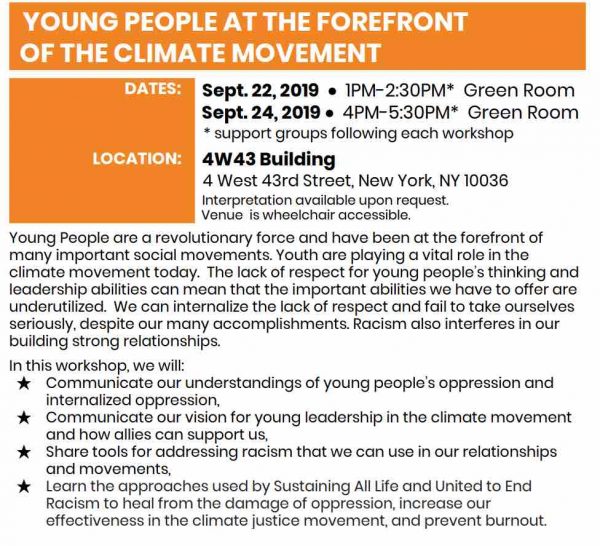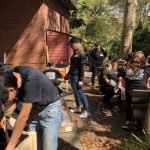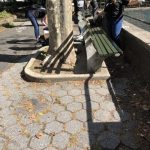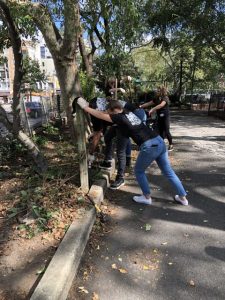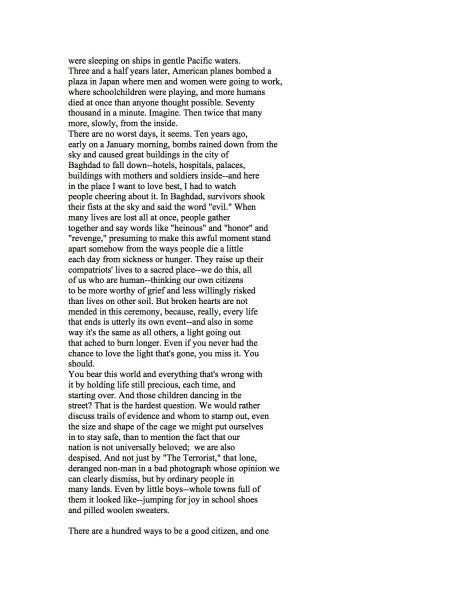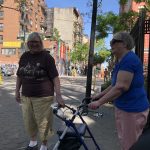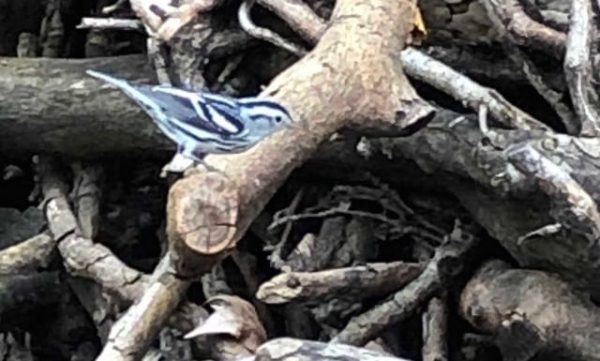Climate Week Women of Color and Collective Sustainability
From:
Women of Color/Collective in Sustainability (WOCCS)” group.
“Dear WOC/CS Nation,
Fall season is upon us! This means sweater weather, ridiculous pumpking-everything marketing, and finally, CLIMATE NYC is here! This special edition email chain is dedicated to informing YOU of what’s going on in the city this month, and how YOU can be a part of it. Events have been carefully curated to fit WOC/CS’s engagement with sustainability, WOC, women empowerment, diversity, environmental justice, technology ..etc) We’ve got you covered!
Climate Week NYC will take place this year from September 23rd to 29th. Run in coordination with the UN and the City of New York, Climate Week continues to grow as the time and place for the world to showcase amazing climate action and discuss how to do more. You can also view Climate Week NYC’s full event calendar here.
Please feel free to reply and share with the collective any exciting events of your own. Now, let’s roll!
Wed 09/18: Diversity in Green: Although green initiatives and organizations are constantly pushing forward important sustainability and climate agendas, have the organizations been as committed to creating an inclusive work environment as well? https://www.eventbrite.com/e/monthly-forum-diversity-in-green-pechakucha-registration-69435831441
Wed 09/18: Latinos in Sustainability – Solar Power Event.https://www.eventbrite.com/e/latinos-in-sustainability-solar-power-event-tickets-67756141443?aff=ebdssbdestsearch
Wed 09/18: Sustainability Consulting: Evolving Opportunities to Become a Change Agent
Thu-sat 19-21 UNited for Climate Justice,
FEPS is hosting a series of dialogues on issues surrounding climate change and those affected by it – UNited for Climate Justice. The event spans Thursday September 19 – Saturday September 21.
Thursday, 19 September (6:30 – 9:00 p.m.): Reception & Photo Exhibition
Friday, September 20 (9:00 a.m. – 12:45 p.m.): Climate Justice Conference, followed by participation in the Climate Strike with Greta Thunberg
Saturday, September 21 (8:30 a.m. – 12:30 p.m.): Climate Justice Conference closing session
The event is free and you are welcome to come to any part of it – simply register at this link:https://unitedforclimatejustice.splashthat.com/
Thu 09/19: Now or Never: Storytellers Tackling Climate Change Eventbrite here
Frid 09/20: Volunteer Orientation: Marketplace of the Future, Closing Event of Climate Week
Fri 09/20: OUR People, OUR Hoods, OUR Power! Uprose the 7th Climate Justice Youth Summit in Brooklyn, NY. The summit is the largest gathering of young people of color in the country on climate change.To register for the Climate Justice Youth Summit, email CJYsummit@uprose.org or call 718-492-9307.
Sat 9/21. 11am – 5pm. Climate Reality Project NYC Chapter’s Day of Climate Action at Governor’s Island.
Sat 09/21: Bringing Labor & Climate Justice Movements Together for a Sustainable Future
Sat 09/21 Building United, Resilient Movements to End the Climate Emergency.Eventbrite here
Sat 09/21: Sustaining Ourselves as Activists and Organizers
Sun 09/22: Supporting Young People of Color in the Climate Movement
Sun 9/22: 7:30 – 10:30pm. Pre-Summit Climate & Cocktails. $45 at The Almond.
Sun 09/22: Women and Climate Justice
Sun 09/22: Supporting Young People of Color in the Climate Movement Complete Schedule
Mon 9/23. 7:30 – 9pm. Youth Climate Strike Panel moderated by Al Gore. Free at NY Ethical Society.
Mon 09/23: The Inescapable Climate Revolution: Are We There
Tues 09/24: Partnership for Policy Integrity (PFPI) will be hosting two screenings of BURNED as part of UN Climate Week NYC 2019 Information here
Wed 09/25: Do No Harm: Achieving Net Zero Buildings
Wed 09/25: Climate Change in the Classroom: Climate Ed and Place-Based
Wed 09/25: NYC Climate Mobilization Act: Opportunities and Risks
Wed 09/25: Women, Climate and Sports Registration here
Wed 09/25: Mindfulness As A Tool for Climate Activism Registration here
Wed 09/25: NAPHN, ILFI, and BE-Ex present a Climate Week event on the role of urban, high-density, net-zero projects in meeting the demands of our emissions reduction goals.https://be-exchange.org/do-no-harm-achieving-net-zero-buildings/
Thu 09/26: BuildingEnergy NYC: This year’s theme of “Electrification” means that content will focus on how electrification will affect design, construction, related policies, technology, operations, user engagement, and community equity, as well as on solutions for when electrification is not possible.http://nesea.org/conference/buildingenergy-nyc
Thu 09/26 Women in The Green Economy NY Climate Week: Women in the Green Economy Tickets
Thu 09/26 Join E2 and our partners for a NYC Climate Week event, “Making New York an Offshore Wind Jobs Hub”
Thu 09/26: SheBuildsWaves : The Quarterly Conversations
Fri 09/27: Marketplace of the FutureCSI members Future Meets Present are organizing the second annual Marketplace of the Future, the official closing ceremony for Climate Week NYC! It’s a cross between a celebration and market, showcasing 40+ start-ups that operate with sustainable supply chains, give-back models, and social benefit at their core. https://www.eventbrite.com/e/marketplace-of-the-future-2019-tickets-67768616757
Sat 09/28: Day of Learning: On the Art of Environmental Justice 2019 Event Registration
Sun 09/29: This new cutting-edge installation confronts the realities of climate change. Arcadia Earth is an immersive experience, with 15 rooms devoted to different environmental issues
Mon 09/30: TBD next WOC/CS meetup!
Oct 1-Oct 6: Pratt Sustainability Coalition invites you to BLUE WEEK 2019https://www.eventbrite.com/e/blue-week-2019-tickets-70034285433
Feel free to share with your other networks!”
Spike in the Methane Levels this year
 “Earlier this summer I began noting the troublesome spike in atmospheric methane readings from Barrow AK. Someone commented they were likely in error. Nope. These record high readings over 2000 ppb are real and part of a record spike up in Arctic methane levels this year.” – Randall Gates
“Earlier this summer I began noting the troublesome spike in atmospheric methane readings from Barrow AK. Someone commented they were likely in error. Nope. These record high readings over 2000 ppb are real and part of a record spike up in Arctic methane levels this year.” – Randall Gates
“This is is legitimately terrifying. Accelerating methane releases could herald a period of profound non-linear temperature increases.” Rob W.
“Methane evaporation from the arctic regions will start a global warming feedback loop which could be far worse than anything our current models are predicting.”
“Totally agree. The abrupt thawing, due to a huge increase in the methane being released from the permafrost, will act like a global warming accelerant. A monumental importance in the climate change discussion that we’re barely even addressing.”
John Hardy, Citizens for NYC and the Sara Roosevelt Park Coalition Work Day
John Hardy Company and Citizen’s for NYC joined the SDR Community Coalition (including the M’Finda Garden and Audubon Society) today to weed, build, rake, mulch, wood chip, tear out, prune.
Thank you to the John Hardy volunteers led by Kim and Kareem. Thank you to Citizens for NYC led by Erika, Carla, and Kai. Thank you to the M’Finda Kalunga Garden volunteers: Steve, Elizabeth, Ted, Jose, Chao, K and Bob. Thank you to Audubon Society Richard, Lily and Yamina!!! Thank you to officer Bozzo (and Urena and others) for stopping by. Thanks Partnerships for Parks: Kirsti, Kyle and Parks Department for guidance and help.
Some photos of the day:
M’Finda Kalunga:
Audubon Plot:
New Forsyth Conservancy Plots, “The Pit” benches, and Side plots:
And …The GARBAGE!!
And AFTER:
Rep. Carolyn Maloney Joins the Lower East Side Community to Call for the Passage of H.R.4197, The Revitalizing Cities Through Parks Enhancement (RECIPE) Act
“When we preserve Parks, green, trees, we’re helping the air, the water, we are helping the mental health of the people it is so important to the future of this city..” Rep. Maloney
“Urban communities in New York City and throughout our nation are in dire need of safe, green spaces. Many cities do not have the space or funding to create community parks and gardens, but have municipally owned lots that go untouched. I introduced the RECIPE Act so that these vacant lots can be transformed into open community spaces to beautify neighborhoods, increase property values, and provide areas for residents to enjoy. The beauty of La Plaza Cultural de Armando Perez Garden and the many community gardens of the Lower East Side represent what good we can do for neighborhoods at home in New York and across the country with the passage of the RECIPE Act,” said Congresswoman Carolyn B. Maloney (NY-12).
“I represent an Assembly District with a long history of community led efforts to reclaim and expand open public space in the form of community gardens. These gardens embody the Lower East Side’s spirit of collaboration, creativity, and solidarity and have been epicenters of activism and ideal places for neighbors to congregate. I want to thank Congresswoman Maloney for introducing the RECIPE Act, which would help more communities in our city, state, and across the country to bring the benefits of community gardens into their lives,” said Assemblymember Harvey Epstein.
“Green space is precious in New York City, and community gardens are treasured in their neighborhoods,” said Manhattan Borough President Gale A. Brewer. “Parks and gardens are essential to a good quality of life, and I thank Congresswoman Maloney for her leadership on this issue, and for her work on the RECIPE act.”
“I want to thank Congresswoman Maloney for reintroducing the RECIPE Act, which would be so critical for the survival of our community gardens. The $10 million grant program this bill would establish wouldn’t just help New York – it would be a boon for urban communities across the country that for decades have been subject to environmental injustice and racism,” said Councilwoman Carlina Rivera. “Gardens are the seeds of our environmental reclamation – and it’s long past time we start planting those seeds.”
Background
Qualified community organizations will receive grants for the establishment of community open space in urban areas from the Secretary of Housing and Urban Development. Grants made under this Act to any single qualified community organization in any one fiscal year may not exceed $250,000.
Only nonprofit community organizations which have histories of serving the community, maintain accountability to residents of the community through significant representation on the organizations governing board, are involved in activities to better the neighborhood, and comply with standards of financial accountability required by the Secretary are eligible for such grants.
In order to be eligible for these grants, municipal property which is located in an urban area must be free of structures, owned by the unit of general local government in which the property is located, and subject to a binding commitment that makes the property available for use and improvement under this Act as community open space for at least seven years.
These grants may be used for the establishment of community open space (including beautification, construction or installation of facilities for improvements for such property, clearance, demolition, removal, design and site improvements), to lease or otherwise obtain the use of eligible municipal real property for establishment of community open space, to maintain community open space, to cover other administrative costs related to the establishment, development, maintenance, administration, or management of the community open space, except that not more than 10 percent of any single grant made under this Act may be used for costs under these specific uses.”
**************************
“We find that the opening of a community garden has a statistically significant positive impact on residential properties within 1000 feet of the garden, and that the impact increases over time. We find that gardens have the greatest impact in the most disadvantaged neighborhoods. Higher quality gardens have the greatest positive impact. Finally, we find that the opening of a garden is associated with other changes in the neighborhood, such as increasing rates of homeownership, and thus may be serving as catalysts for economic redevelopment of the community.”
*********************
More Coverage:
PIX11: Rep. Maloney Calls for Bill to Create More Community Gardens & Parks in Inner Cities
NY1: New Act Proposed to Create & Revive Parks & Gardens
Rep. Maloney Joins the Lower East Side Community to Call for the Passage of H.R.4197, The Revitalizing Cities Through Parks Enhancement (RECIPE) Act
Visit From a Black and White Warbler
Seen in M’Finda Kalunga Community Garden
From Cornell Lab of Ornithology: BASIC DESCRIPTION
One of the earliest-arriving migrant warblers, the Black-and-white Warbler’s thin, squeaky song is one of the first signs that spring birding has sprung. This crisply striped bundle of black and white feathers creeps along tree trunks and branches like a nimble nuthatch, probing the bark for insects with its slightly downcurved bill. Though you typically see these birds only in trees, they build their little cup-shaped nests in the leaf litter of forests across central and eastern North America.
Check out the website for its bird call.
- Go to the previous page
- 1
- …
- 51
- 52
- 53
- 54
- 55
- 56
- 57
- …
- 164
- Go to the next page








